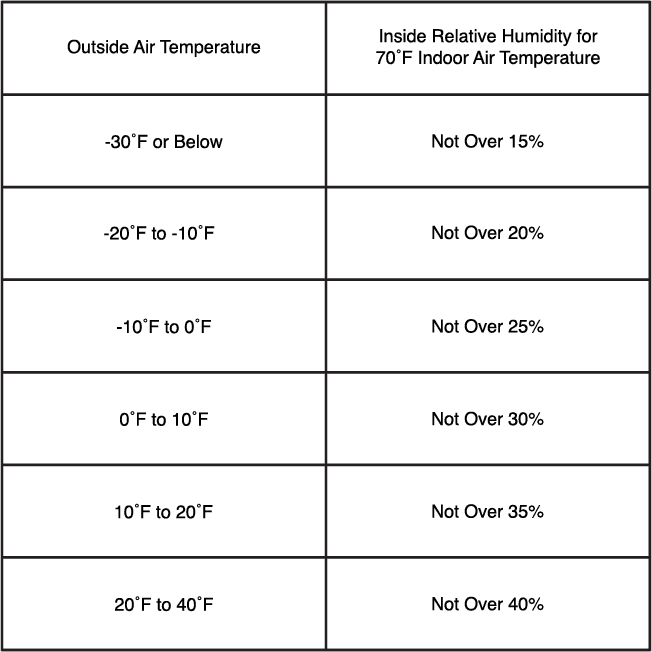Condensation
The information below gathered from the internet should help if there is an issue with condensation. See links on condensation articles below.
- Things that add humidity: Uncovered ground in crawlspaces, indoor plants, laundry hung out to dry, cooking activities, aquariums, humidifiers, hot tub, shower, indoor pool, etc. all add water vapor to the air. Add to this the natural humidity that Mother Nature contributes to the air all around us and you can see that humidity is a very common thing.
- Water is forming on your new windows because one of several things is happening. The temperature of the inner glass surface is at or below the dew point for the amount of humidity in your inside air. The humidity of your indoor air is quite possibly much higher now with your new windows because the air leaks around your old windows were eliminated once the new windows were installed.
- If you discover that your indoor humidity is not too high using your hygrometer, then you can minimize or eliminate the condensation by creating air movement around the windows. Just as blowing air dries say laundry things outdoors, air blowing over the interior glass will act just like the defroster does in your automobile.
Source: Ask The Builder
- David Bareuther, Associated Press Building editor, sums up the problem of reducing humidity by saying there are only three ways to reduce humidity:
- CONTROLLING SOURCES OF HUMIDITY: For instance, venting all gas burners, clothes dryers, etc., to the outdoors. Use of kitchen or bathroom exhaust fans.
- WINTER VENTILATION: Because outside air usually contains less water vapor, it will “dilute” the humidity of inside air. This takes place automatically in older houses through constant infiltration of outside air.
- HEAT: The process of heating your home will reduce the relative humidity, providing its dry heat. It will counter-balance most of all the moisture produced by modern living.
Now before we summarize specific steps for reducing humidity in your home, let’s include some basic data about recommended moisture. You can refer to it if you are inclined to test the moisture levels in your own home. The table below is the result of long and careful experiments at the University of Minnesota Engineering laboratories. It shows the maximum safe humidities for your home, not only for the windows, but even more for your paint, insulation, and structural members. In most cases, reducing moisture to these humidities will cure troublesome condensation on windows; if not, you can reduce humidity further without discomfort to you or your family.
If you test humidity in your home, be sure to use an accurate instrument, preferably a good sling psychrometer. Remember, too, that these relative humidities are for 70 degrees F. For higher temperatures, lower humidities are required.

Seven Practical Steps to Control Condensation
Here, arranged from easy to more difficult, are the steps you should take to reduce condensation on your windows.
- Install replacement windows with double glazing.
- Shut off furnace humidifier and any other humidifying devices in your home.
- Be sure that louvers in attic or basement crawl spaces are open and that they are large enough.
- Run kitchen or other ventilating fans longer and more often than has been your custom.
- Open fireplace damper to allow easier escape for moisture.
- Air out your house a few minutes each day. Air out kitchen, laundry and bathrooms during use or just following use.
- If troublesome condensation persists see your heating contractor about an outside air intake for your furnace; about venting of gas-burning heaters and appliances; or about installation of ventilating fans.
If the common remedies we suggest (number 1 through 5) don’t work, you REALLY have a condensation problem. But the changes your heating contractor may recommend to further reduce humidity in your home should not be very expensive. Certainly they will be less expensive than a big paint job caused by excessive water vapor.

